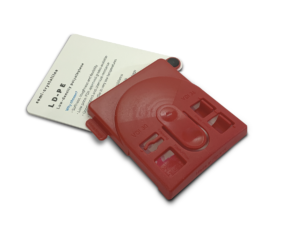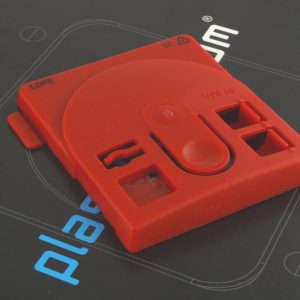
LD-PE means low-density polyethylene. It is widely used soft commodity plastic. It is clear that stiffness is not an objective that can be achieved using LD-PE. The properties of LDPE are utilised in freeze box lids, for example; the hardness or modulus of the material depends on the blend. At room temperature, the hardness of the grade used in the Plasticprop sample is Shore D 40.
Why choose it?
- An inexpensive alternative to TPE (not in 2k products).
- Good impact and chemical resistance
- LD-PE restores its ductility even in low temperatures. Its Tg is on the level of -110°C
Why not choose it?
- Poor thermal resistance
- Soft, poor scratch resistance
- Sensitive to UV-light
- Poor bonding
- Flammable
Typical applications:
- Food container lids
- Ventilation duct caps
- Toys
By examining the Plasticprop sample made of LD-PE, you can draw for example the following conclusions:
- LDPE is very fluid; the integral hinge works, but can be torn off quite easily. Otherwise the material is reasonably tough.
- You can bend the sample even at sharp angles without leaving a permanent mark.
- In a manner typical of polyolefins, the sample surfaces are waxy and slippery. This distinguishes it clearly from TPE grades of the same hardness category.
- The shrinkages of HDPE and LDPE are in the same range.
- The material hardness is not quite sufficient for replicating the glossy mould surface.
